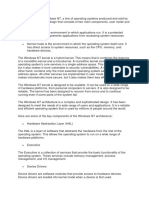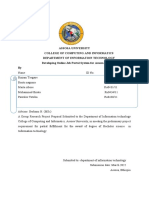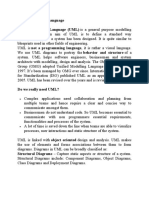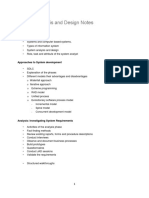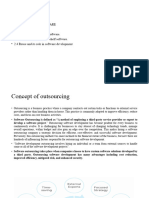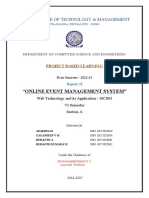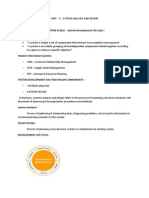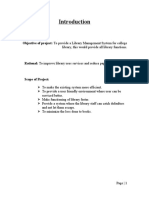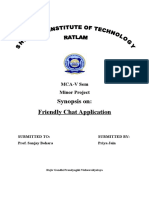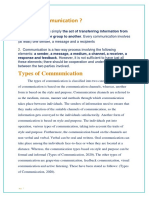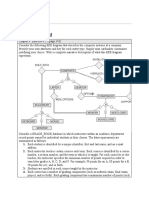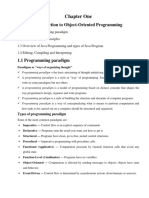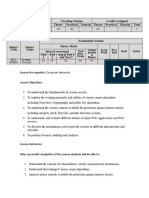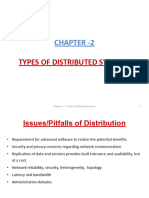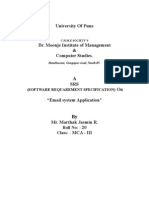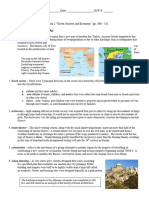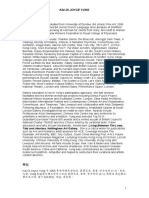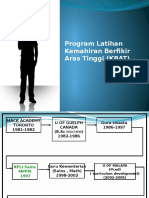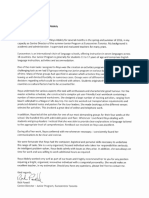CHAPTER 1 ABSTRACT
Project Title: WEBMAIL
Objective: The objective behind developing Web Based E-mail System or Webmail is to allow users to access their email using a Web browser, so that it is accessible from any Internet-connected system anywhere in the world. Description: Now a days almost every organization or institution or a company maintains its websites and mail servers. And employees of the organization are provided official Email IDs under its domain. Webmail is beneficial for the employees as they can access their email using a web browser from any system on Internet. Now using webmail they are not limited to access their email in organization only. The employees can check their important mails from anywhere through the Internet. The whole system is secure enough that no one can access without authorization and authentication. The salient features of system are: o Provide a secure account because no one can access anyone account except that user itself. o Provide facilities like o Compose Mail, o Reply to a mail, o Forward a mail, o Inbox, o Sent mail, Web Based Email System 1
�o Drafts, o Address Book o User friendly that user can access information on a single click..
Web Based Email System
�CHAPTER 2 INTRODUCTION
Web Based E-mail System or Webmail is a service which allows users to access their email using a Web browser, so that it is accessible from any Internetconnected system anywhere in the world. What differentiates Webmail from a normal PC-based email system such as Microsoft Outlook is that you can access your mail on any PC that is connected to the internet. Some of the desirable traits of a mail system are: Centralized storage. Users should see the same email history every time they check email, no matter which computer or email reader they happen to be using. Reliability. Email is important. A disk failure or a negligent sysadmin should not be a cause for losing it. The mail server should always be running, and well-connected to the internet. Availability. Email should be readable wherever you are. Completeness and correctness. An email reader should be able to receive, display, and send attachments. Any message it sends should be standards-conforming. Because many other systems are not, it should be able to handle common deviations from the standard.
Web Based Email System
�CHAPTER 3 PROJECT AND PROBLEM DESCRIPTION
Now a days almost every organization or institution or a company maintains its websites and mail servers. And employees of the organization are provided official Email IDs under its domain. Webmail is beneficial for the employees as they can access their email using a web browser from any system on Internet. Now using webmail they are not limited to access their email in organization only. The employees/users can check their important mails from anywhere through the Internet. The whole system must be secure enough that no one can access without authorization and authentication. The salient features of system are: o Send and receive emails from any PC at any time. o Provide a secure account because no one can access anyone account except that user itself. o Unlimited storage space for your emails. o Send attachments to multiple recipients. o Retrieve mails from POP3 server and store it in database so that user can access mails with maximum speed; o Provide facilities like o Compose Mail, o Reply to a mail, o Forward a mail, o Inbox, o Sent mail, o Drafts, o Address Book: To maintain an online list of addresses.
Web Based Email System
�o User friendly that user can access information on a single click.
CHAPTER 4 FEASIBILITY STUDY
Feasibility study is the most important step in System Analysis. It is the determination of whether the project is feasible or not. Once it has been determined that a project is feasible, the analyst can go ahead and prepare the project specification which finalizes project requirements. There are three types of feasibility study to be considered that are as follow:-
4.1 Technical Feasibility:
This is concern with specifying with equipment and software that will successfully satisfy the user requirement. The technical needs of the system may vary considerably, but might include The facility to produce output in a given time. Response time under certain conditions Ability to process certain volume of transaction at a particular speed. Facility to communicate data to distinct location.
In examining technical feasibility, configuration of the system is given more importance than the actual make of hardware. The configuration should give the complete picture about the systems requirement.
4.2 Economical Feasibility:
Economical analysis is the most frequently used technical for evaluation the effectiveness of a proposed system. Economical feasibility is most commonly known as costs benefit analysis. It is the procedure to determine the benefits and savings that are expected from a proposed system and compare them with cost. This software reduces the paper work as well as manpower and provides better Web Based Email System 5
�management of supply chain. It can be analyzed that the cost of proposed system is much less than the benefits that can be derived from it. So we can accept it to be economically feasible.
4.3 Duration (Time Feasibility):
Time feasibility is a determination of weather a proposed project can be implemented fully within a stipulated period. If a project takes too much time it is likely to be rejected. The proposed system takes a little time period for implementation so it can be considered as Time Feasible Software.
4.4 Operational/ Behavioral Feasibility:
After considering the following points, it is found that the system is operationally feasible: It gives centralized storage of mails. It is reliable as disk failure doesnt cause lose of your Emails. You just need to be well connected to the Internet and Email server must be running. Emails are available to users anywhere anytime. Users are able to receive, display and send mails with attachments.
Web Based Email System
�CHAPTER 5 SYSTEM ANALYSIS
MOTIVATION
Email handlers are among the first user-level programs written for any new operating system, and are one of the few core tools that almost anyone using a computer will use on a regular basis. Most recently, we have seen a blossoming of Web-based email systems such as Hotmail and Yahoo Mail. Why build yet another mail system? Some of the desirable traits of a mail system are: Centralized storage. Users should see the same email history every time they check email, no matter which computer or email reader they happen to be using. Reliability. Email is important. A disk failure or a negligent sysadmin should not be a cause for losing it. The mail server should always be running, and well-connected to the internet. Availability. Email should be readable wherever you are. Completeness and correctness. An email reader should be able to receive, display, and send attachments. Any message it sends should be standardsconforming. Because many other systems are not, it should be able to handle common deviations from the standard.
SOFTWARE ENGINEERING PARADIGM APPLIED (RAD-MODEL)
The two design objectives continuously sought by developers are reliability and maintenance. Web Based Email System 7
�Reliable System There are two level of reliability. The first is meeting the right requirements. A careful and through systems study is needed to satisfy the aspect of reliability. The second level of systems reliability involves the actual working delivered to the user. At this level, the systems reliability is interwoven with software engineering and development. There are three approaches to reliability. Error avoidance: Prevents errors from occurring in software. Error detection and correction: In this approach errors are recognized whenever they are encountered and correcting the error by effect of error, of the system does not fail. Error tolerance: In this approach errors are recognized whenever they occur, but enables the system to keep running through degrades perform or by applying values that instruct the system to continue process. Maintenance The key to reducing need for maintenance, while working, if possible to do essential tasks 1. More accurately defining user requirement during system development. 2. Assembling better systems documentation. 3. Using more effective methods for designing, processing, and login and communication information with project team members. 4. Making system engineering process effectively.
Web Based Email System
�CHAPTER 6 SOFTWARE REQUIREMENT SPECIFICATION
An SRS is basically an organization's understanding of a user or potential client's system requirements and dependencies at a particular point in time (usually) prior to any actual design or development work. It's a two-way insurance policy that assures that both the client and the organization understand the other's requirements from that perspective at a given point in time.
INTRODUCTION
Web Based E-mail System or Webmail is a service which allows users to access their emails using a Web browser, so that it is accessible from any Internetconnected system anywhere in the world.
6.1 FUNCTIONAL REQUIREMENTS
Functional requirements for the proposed system are the functions that the system must perform. This system must perform following functions: 1. 2. 3. 4. 5. Only authorized users are allowed to login and access their emails Administrator can set the network credentials like host IP, domain, Mails are retrieved from POP3 server and stored in Database on Showing the received mails in INBOX. Composing and sending the mails with or without attachments to from mail server. SMTP port and POP3 port. web server. Also attachments are parsed and stored on web server.
the SMTP server. Web Based Email System 9
�6. 7. 8.
Storing the sent mails in Database, also storing the attachment on Mails can be saved and attachments can be stored in Database on Adding new contacts and showing contact list under
the web server. And showing the list of sent mail in SENTMAIL. web server as draft in DRAFTS without sending them. ADDRESSBOOK.
6.2 GENERAL CONSTRAINTS
1. Users should see the same email history every time they check email, No matter which computer or email reader they happen to be using. 2. Email is important. A disk failure or a negligent sysadmin should not
be a cause for losing it. The mail server should always be running, and well-connected to the internet. Hence must conform to a certain level of reliability. 3. Email should be readable wherever you are. Hence must conform
to availability. 4. An email reader should be able to receive, display, and send
attachments. Hence conform completeness and correctness.
6.3 NONFUNCTIONAL REQUIREMENTS
Other non-functional requirements contain performance requirements and security requirements. In Performance requirements the server should be handle any number of clients and fast access service. In the security requirements we have to mention the security at large level. This can be done by defining roles of each member like administrator, users. By this we can provide high security one option is sessions but by sessions we cant maintain state always so for higher security purpose we define roles Web Based Email System 10
�6.4 TECHNICAL REQUIREMENTS Hardware Requirements:
Processor Speed Cache RAM Hard Disk : : : : : Intel Pentium IV 1.4 G Hz and above 256 KB 256 MB and above 20 GB and above
Software Requirements:
Operating System Front End Web Server Database Server Mail Server : : : : : Windows NT | 2000| XP Visual Studio.Net 2008 IIS (Internet Information Server) SQL Server (Express Edition) EmailArchitect Email Server
6.5 SELECTED TOOLS AND SOFTWARES
We use ASP.NET with C# of .NET framework 3.5 and Common Language Runtime with SQL Server 2005 Database Storage to build this system. We are going to use following tools and softwares :
Microsoft Visual Studio 2008(.NET Framework 3.5) ASP.NET Platform SQL Server 2005 EmailArchitect Email Server Web Based Email System 11
�6.5.1 ABOUT MICROSOFT .NET .NET is Microsofts vision of Software as a service , a development environment in which you can build, create and deploy your applications and the next generation of components, the ability to use the Web rather than your own computer for various services. Microsoft introduced great technologies like COM, DCOM, and COM+ etc. to enable reuse of Software. Although these technologies are very powerful to reuse Software, they required a huge learning curve. According to this aspect, Microsoft realized that its time to come up with a new Technology, a better one, an easier one, a new Framework, within which each Programming Task is easy accomplished. Components of .NET Framework: The .NET Framework consists of Web Forms, Windows Forms and Console applications that pertains the presentation layer of an application Web Forms are used in Web-Based applications whereas Windows Forms are used in Windows based applications for providing an interactive user interface. Some of the advantages offered by the .NET Framework are: 1. Consistent programming model 2. Multi-platform applications 3. Multi-language integration 4. Automatic resource management 5. Ease of deployment The .NET Framework is a managed, type-safe environment for application development and execution. The framework manages all aspects of the execution of your program: it allocates memory for the storage of data and Web Based Email System 12
�instructions, grants or denies the appropriate permissions to your application, initiates and manages application execution, and manages the reallocation of memory for resources that are no longer needed. The .NET Framework consists of two main components; the common language runtime and the .NET Framework class library. The common language runtime can be thought of as the environment that manages code execution. It provides core services, such as code compilation, memory allocation, thread management, and garbage collection. Through the common type system (CTS), it enforces strict type safety, and it ensures that code is executed in a safe environment by enforcing code access security. The .NET Framework class library provides a collection of useful and reusable types that are designed to integrate with the common language runtime. The types provided by the .NET Framework are object-oriented and fully extensible, and allow you to seamlessly integrate your applications with the .NET Framework.
6.5.2 ASP .NET ASP.NET is the platform that you use to create Web applications and Web services that run under IIS. ASP.NET is not the only way to create a Web application. Other technologies, notably the CGI, also enable you to create Web applications. What makes ASP.NET special is how tightly it is integrated with the Microsoft server, programming, data access, and security tools. ASP.NET provides a high level of consistency across Web application development, in a way, it is similar to the level of consistency that Microsoft Office brought to desktop applications. ASP.NET is part of the .NET Framework and is made up of several different components. Web Based Email System 13
�Advantages of ASP.NET ASP.NET has many advantages over other platforms when it comes to creating Web applications. Probably the most significant advantage is its integration with the Windows server and programming tools. Web applications created with ASP.NET are easier to create, debug, and deploy because those tasks can all be performed within a single development environmentVisual Studio .NET. ASP.NET delivers the following other advantages to Web application developers: Executable portions of a Web application compiled so they execute more quickly than interpreted scripts On-the-fly updates of deployed Web applications without restarting the server Access to the .NET Framework, which extends the Windows API Use of the widely known Visual Basic programming language, which has been enhanced to fully support object-oriented programming Automatic state management for controls on a Web page (called server controls) so that they behave much more like Windows controls The ability to create new, customized server controls from existing controls Built-in security through the Windows server or through other
authentication/authorization methods Integration with Microsoft ADO, NET to provide database access and database design tools from within Visual Studio .NET Web Based Email System 14
� Full support for Extensible Markup Language (XML), cascading style sheets (CSS), and other new and established Web standards Built-in features for caching frequently requested Web pages on the server, localizing content for specific languages and cultures, and detecting browser capabilities.
6.5.3 SQL SERVER 2005 Microsoft SQL Server is based on Client/ Server Architecture. It is designed to work effectively in a number of environments: As a two tier or multi tier client/server database system. As a desktop database system. Client/Server Database Systems Client/server systems are constructed so that the database can reside on a central computer, known as a server, and be shared among several users. Users access the server through a client or server application: In a two tier client/server system, users run an application on their local computer, known as a client that connects over a network to the server running SQL Server. The client application runs both business logic and the code to display output to the user, and is also known as a thick client. In a multi tier client/server system, the client application logic runs at two locations: The thin client is run on the user's local computer and is focused on displaying results to the user.
Web Based Email System
15
�The business logic is located in server application running on a server. Thin clients request functions from the server application, which is itself a multithreaded application capable of working with many concurrent users. The server application is the one that opens connections to the database server and can be running on the same server as the database, or it can connect across the network to a separate server operating as a database server. Database Architecture Microsoft SQL Server data is stored in databases. The data in a database is organized into the logical components visible to users. A database is also physically implemented as two or more files on disk. When using a database, you work primarily with the logical components such as tables, views, procedures, and users. The physical implementation of files is largely transparent. Typically only the database administrator needs to work with physical implementation. Server Architecture The server is the Microsoft SQL Server components that receives SQL statements from clients and perform all the actions necessary to complete the statements. The component that make up the SQL server: How the server compiles each batch of SQL statements into an execution plan that tells the server how to process the statement. How the server manages Microsoft windows resources such as memory, threads and tasks. How the server determines which part of a distributed query references a linked server and what request to transmit to the server to obtain the needed data. Web Based Email System 16
� How the server transmits remote stored procedure call to remote server. How the server manages concurrency and transaction issues. How the server implements server cursors. How the server implements server cursors. Administration Architecture
Each version of Microsoft SQL Server seeks to automate or eliminate some of the repetitive work done by the database administrators in earlier versions of SQL Server. Because database administrators are typically among the people most highly trained in database issues at each site, this frees a valuable resource to spend more time working on database design and application data access issues.
6.5.4 EmailArchitect Email Server It is a Windows based Email Server. It is a full featured and high performance smtp, pop3 and imap4 components for professional developers with full support, assistance and professional guidance. All of components are completely suitable for Visual Basic, VBA, ASP, Visual C++, CSharp, VB.NET, JScript.NET, ASP.NET or other programming languages which support COM. SMTP component allows developers to deliver required reliability and functionality email applications in C#, VB.NET, JScript.NET, ASP.NET or other .NET framework more easily. POP3 & IMAP4 component allows developers to deliver required reliability and functionality email applications in C#, VB.NET, JScript.NET, ASP.NET or other .NET framework more easily.
Web Based Email System
17
�CHAPTER 7 SYSTEM DESIGN
7.1 DATA FLOW DIAGRAM
7.1.1 Context Diagram
Admin
User
WEBMAIL
Check mails
Send mails
Contact list
Figure 7.1 Context Diagram
Web Based Email System
18
�7.1.2 High Level DFD
Admin
User
_______ LOGIN
Contacts Setting MENU
Compose eee Sentmail Inbox
Drafts
M. Send
POP3 Server
SMTP Server
List of mails
Figure 7.2 DFD of Overall System
Web Based Email System
19
�7.1.3 Low Level DFD : LOGIN
_Login db_
Admin
Verification
Menu Selection
User
7.3 DFD of Login
Web Based Email System
20
�7.1.4 Low Level DFD: COMPOSE MAIL
USER
Compose mail
Save as Draft Send mail
Database updates SMTP Server
Mail db
Attachment db
Figure 7.4 DFD of Compose mail
Web Based Email System
21
�7.1.5 Low Level DFD: INBOX
USER
POP3 server Select a mail from list Attachment db
Inbox
Mail db
Open mail
Reply mail
Forward mail
_________ Compose mail
SMTP server
Attachment db
Figure 7.5 DFD of Inbox Web Based Email System 22
�7.1.6 Low Level DFD: SENTMAIL
USER
Sentmail Mail db Select a mail from list
Open mail Attachment db
Forward mail
SMTP server
Figure 7.6 DFD of Sentmail
Web Based Email System
23
�7.1.7 Low Level DFD: DRAFTS
USER
Drafts Mail db Select a mail from list
Open mail Attachment db
Forward mail
SMTP server
Figure 7.7 DFD of Drafts
Web Based Email System
24
�7.1.8 Low Level DFD: ADDRESS BOOK
USER
Address book
Contact list
Add Contact
Contacts db
Figure 7.8 DFD of Address book
Web Based Email System
25
�7.1.9 Low Level DFD: ADMIN SETTING
USER
Admin Setting
Change Setting
Change Domain, SMTP and POP ports, host settings
Administrator db
Figure 7.9 DFD of Admin setting
Web Based Email System
26
�7.1.10 Low Level DFD: USER SETTING
USER
User Setting
Change Password
Login db
Figure 7.10 DFD of User Setting
Web Based Email System
27
�7.2
E-R Diagrams:
USERID LOGIN
NAME
PASSWORD
USER_ MAIL
LAST_NAME
EndPersonID DATE MAILID FLAG ATTACHMENT
MAILDB
MAIL_ATT ACH
ATTACH MENT
BODY SUBJECT CC BCC PATH DATE
Figure 7.11 E-R Diagram of USER_MAIL Web Based Email System 28
�CID
USERID
EMAIL
CONTACTS
NAME
LAST NAME
Figure 7.11 E-R Diagram of CONTACTS Table
DOMAIN
HOST
ADMINISTRATOR
SMTP_PORT
POP_PORT
Figure 712 E-R Diagram of ADMINISTRATOR Table
Web Based Email System
29
�7.3
DATABASE SCHEMA DESIGN
Figure 7.12 Database Schema Diagram
Web Based Email System
30
�7.4
USECASE DIAGRAM
Figure 7.13 Use Case Diagram
Web Based Email System
31
�7.5
ACTIVITY DIAGRAM
7.5.1 Registration
Figure 7.14 Activity Diagram of Registration
Web Based Email System
32
�7.5.2 Login
Figure 7.15 Activity Diagram of Login
Web Based Email System
33
�7.5.3 Compose Mail
Figure 7.16 Activity Diagram of Compose and Send mail
Web Based Email System
34
�7.5.4 Retrieve Mail
Figure 7.17 Activity Diagram of Retrieve Mail
Web Based Email System
35
�7.6
BLOCK DIAGRAM
Login Form
Authentication
Registration
Close
Compose Mail Inbox Sentmail Drafts Addressbook Setting
New User
Exit
Figure 7.18 Block Diagram of WEBMAIL
Web Based Email System
36
�7.7
MODULE DESCRIPTION
7.7.1 Login
This module deals with the authentication of the user. If the userID and Password is correct, then user is allowed to log into the system .
7.7.2 Logout
In this module the current user session is expired. And then page is redirected to Login page.
7.7.3 Registration
A user has to register itself before using this system. So new user must have to fill some information and thus create its userID to get authentication to access the Webmail.
7.7.4 Compose and send mail
This module will allow the user to compose a new mail with or without attachment and sending the mail to SMTP server. Also mail can be saved as draft without sending.
7.7.5 Mail retrieval
This module causes the retrieval of mails from POP3 server, parsing the mails, saving the mails and attachments in database.
7.7.6 Listing mails
This module deals with the populating of mails in INBOX, SENTMAIL, and DRAFTS.
7.7.7 Viewing mail
This module facilitates the user to open and see the details of a mail from Web Based Email System 37
�a list of mails.
7.7.8 Reply and forward a mail
Mails in INBOX, SENTMAIL and DRAFTS can be forwarded further. Also we can reply the people we get mails from.
7.7.9 Admin and user setting
All the Users of the system can change their password whenever they want. Admin can reset the Network Credentials like Domain, SMTP port, POP3 port, and Host IP.
Web Based Email System
38
�7.8
DATA DICTIONARY
SQL Server 2005 used as back end in this project. The tables are as follow:
7.8.1 Login Table
Figure 7.19 Login table Description: This table is used to contain the user details for login and access the system.
Web Based Email System
39
�7.9
Administrator Table
Figure 7.20 Administrator table
Description: This table contains the Network Credentials required to log into and access the mail server.
Web Based Email System
40
�7.10 Maildb Table
Figure 7.21 Maildb table Description: This table contains the details of the received, saved and sent mails.
Web Based Email System
41
�7.11 Attachments Table
Figure 7.22 Attachments Table Description: This table contains the details of attachments of the received,
saved and sent mails.
Web Based Email System
42
�7.12 Contacts Table
Figure 7.23 Contacts Table Description: This table contains the details of the contacts added in the Address Book.
Web Based Email System
43
�CHAPTER 8 CODING PHASE
ASP.NET 3.5 Using C# is used to create front end of the system. There are following pages: Masterpage.master This page be inherited to keep the basic look and behavior of the system same. Default.aspx This form is the first page of the system. This allow user to log into the system. Registration.aspx This form allows new user to fill the registration form. 8.4 Redirect_login.aspx In this form new user is asked to log into the system directly after the registration. 8.5 Retrieval_mail.aspx This form retrieves mails from POP3 server and parses the mails. 8.6 Inbox.aspx This form populates all the received mails. 8.7 Composemail.aspx This form allows user to compose a new mails
Web Based Email System
44
�8.8 Sentmail.aspx This form populates all the sent mails. 8.9 Drafts.aspx This form populates all the mails saved as drafts. 8.10 Addressbook.aspx This form lists all the contacts of the user. 8.11 Add_contacts.aspx This form allows user to add new contact. 8.12 Open_mail.aspx This form allows user to view the mail details. 8.13 Forward_mail.aspx This form allows user to forward a mail further from Inbox, Sentmail and Drafts. 8.14 Adm.aspx This form shows the Network Credentials. 8.15 Change_setting.aspx This form allows admin to reset the Network Credentials. 8.16 User_setting.aspx This form allows user to change its Password. 8.17 Logout.aspx This form expires the current users session. Web Based Email System 45
�CHAPTER 9 SYSTEM TESTING
Once the coding at the programmer side is completed the module is subjected to testing. Testing is to be done at the interface level as well as to see whether the functional specification the proposed system has been achieved. The person other than the programmer conducted testing and bugs reported led to the enhancement at the programming level and the interface level as well. Before the suggested bugs are kept for Beta testing it is ensured that the suggested bugs were removed. Most of bugs reported were Cosmetic changes to be made at the interface level to make the interface more user friendly while some of them suggested insufficient error handling in the case of Database operation. After ensuring removal of the suggested bugs it is decided to carry out Testing at the user end. For this the module had to be tested with the actual data at the user hand. Testing with actual data did suggest some enhancement at the module has been kept for Beta testing, Which is supposed to be under testing for a considerable period of time before actual implementation plan taken. WHITE BOX TESTING Module level testing has done. For each forms the validation to be carried out are listed. Test cases for boundary cases and intermediate values are prepared and listed in an excel sheet. The tests are then carried out and results noted. Corrective steps are taken rectify the bugs found. COMPILATION TEST It was a good idea to do our stress testing early on, because it gave us time to fix some of the unexpected deadlocks and stability problems that only occurred Web Based Email System 46
�when components were exposed to very high transaction volumes. EXECUTION TEST This program was successfully loaded and executed. Because of good programming there were no execution errors. OUTPUT TEST The successfully output screens are placed in the output screens section.
Web Based Email System
47
�CHAPTER 10 USER MANUAL
10.1 LOGIN
Figure 10.1 Login Window
Web Based Email System
48
�10.2 REGISTRATION
Figure 10.2 Registration Window
Web Based Email System
49
�10.3 COMPOSE MAIL
Figure 10.3 Compose Mail Window
Web Based Email System
50
�10.4 INBOX
Figure 10.4 Inbox Window
Web Based Email System
51
�10.5 SENTMAIL
Figure 10.5 SentMail Window
Web Based Email System
52
�10.6 DRAFTS
Figure 10.6 Drafts Window
Web Based Email System
53
�10.7 ADDRESS BOOK
Figure 10.7 Address Book Window
Web Based Email System
54
�10.8 Open Mail
Figure 10.8 Open Mail window
Web Based Email System
55
�10.9 Forward Mail
Figure 10.9 Forward Mail Page
Web Based Email System
56
�10.10 REPLY Mail
Figure 10.10 Reply Mail Page
Web Based Email System
57
�10.11 DOWNLOAD ATTACHMENT
Figure 10.11 Download Attachment
Web Based Email System
58
�10.12 CHANGE PASSWORD
Figure 10.12 Change Password Window
Web Based Email System
59
�10.13 ADMIN SETTING
Figure 10.13 Admin setting Window
Web Based Email System
60
�10.14 CHANGE NETWORK CREDENTIALS
Figure 10.14 Change Network Credentials Window
Web Based Email System
61
�CHAPTER 11 CONCLUSION
Webmail allows users to access their email using a Web browser. Users can access its mails from any Internet connected system from anywhere in the world. It is easy to use, since it uses the GUI. User friendly screens are provided. It can be easily and efficiently employed as a web based Email system. User can compose, send, receive and save mails in a very easy way. User can easily reply and forward mails. It has been thoroughly tested and implemented. Internet based application.
Web Based Email System
62
�CHAPTER 12 FUTURE ENHANCEMENT
No perfection can be achieved at once. This is a universal truth. My project is an example of above line. Some ideas are still in my mind but not converted as code. I have some plans in my mind to develop my project more and more. So that it can give more facilities to the users. Facilities I want to give our users but still under construction: We can implement chat facility in it for users. We can implement free SMS sending facility to any mobile in it for users. We can implement customization facility to user in order to change the look and behavior of its webmail account. Help menu for users assistance.
Web Based Email System
63
�BIBLIOGRAPHY
Books ASP.NET 3.5 Using C# By CMC Ltd. Database System Concepts By Korth (McGRAW HILL Publication) System Analysis and Design By E.M. Awad (Galgotia Publication) An Integrated Approach to Software Engineering By Pankaj Jalote URL www.wikipedia.com
Web Based Email System
64
